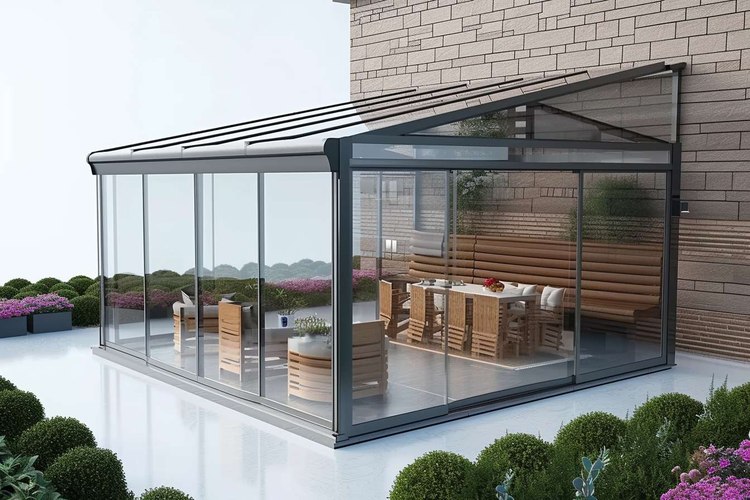Sunroom Installation: Plan, Build, and Enjoy Year-Round Light
Thinking about adding a sunroom? This detailed guide walks you through choosing the right type—three-season, four-season, screened porch, solarium, or conservatory—selecting materials, estimating costs, and following each installation step. Learn how to plan, budget, and work with pros to create a bright, functional living space that boosts comfort and home value.

How to prepare for a sunroom project
A successful sunroom begins long before construction. First, clarify how you intend to use the space: a relaxed lounge, a dining nook, a year-round office, or a plant-filled conservatory. Your intended use will determine needed insulation, HVAC, glazing, and layout. Next, evaluate how the addition will connect to your home’s architecture. The goal is an integrated look that complements your roofline, siding, and overall design rather than appearing tacked on.
Site considerations are equally important. Check sunlight patterns, prevailing winds, drainage, and sightlines to neighboring homes. Consult local building codes and zoning rules early — setbacks, height limits, and permit requirements can influence size and placement. Gathering this information up front saves time and avoids redesigns.
Sunroom styles and which fits your needs
Sunrooms come in distinct categories that suit different climates and budgets:
- Three-season sunrooms: Designed for spring through fall use, these prioritize views and ventilation over full insulation.
- Four-season sunrooms: Built with insulation, quality glazing, and heating/cooling so the room is comfortable year-round.
- Screened porches: The most economical option, providing shade and airflow while keeping insects out.
- Solariums: Predominantly glass constructions, often including glass roofs to maximize daylight.
- Conservatories: Classic, often ornate structures with a focus on glass and elegant rooflines, commonly used as showpiece rooms.
Choose based on your climate, how often you’ll use the space, and the level of comfort you expect throughout the year.
Building materials and their trade-offs
Material choices affect durability, appearance, maintenance, and energy performance:
- Glass: Available in tempered, low-E, and double- or triple-pane options; glazing selection influences solar gain and insulation.
- Aluminum: Strong and lightweight, often used for frames; less insulating than other options unless thermally broken.
- Vinyl: Low-maintenance and cost-effective with good insulating properties; available in many colors and finishes.
- Wood: Warm and attractive but requires periodic maintenance; often used where aesthetics are a priority.
- Polycarbonate: A shatter-resistant, lightweight alternative for roofs that lets in diffuse light while reducing heat gain compared with clear glass.
Selecting appropriate glass and frame combinations is crucial for energy efficiency — for a four-season sunroom, prioritize insulated frames and low-E glazing.
Costs at a glance
Below is a general pricing overview to help plan your budget. Actual costs vary by region, contractor, materials, and custom features.
| Sunroom Type | Typical Cost Range | Notable Characteristics |
|---|---|---|
| Screened Porch | $5,000 - $15,000 | Open-air feel, insect protection, lower cost |
| Three-Season Room | $10,000 - $40,000 | Glass windows, limited insulation, seasonal use |
| Four-Season Room | $25,000 - $80,000 | Fully insulated, HVAC-ready, year-round comfort |
| Solarium | $30,000 - $100,000+ | Extensive glazing including roof, premium light exposure |
| Custom Conservatory | $50,000 - $200,000+ | Decorative design, high-end materials, bespoke construction |
Prices, rates, or cost estimates mentioned in this article are based on the latest available information but may change over time. Independent research is advised before making financial decisions.
Step-by-step installation process
-
Design and planning: Work with a designer or contractor to translate your goals into detailed plans. Consider structural integration, roof tie-ins, and how the sunroom will affect existing spaces.
-
Permits and approvals: Submit plans to local authorities and obtain required permits. Some historic districts or HOAs may have additional review steps.
-
Site preparation and foundation: Clear the area, address drainage, and pour a foundation suited to the sunroom type — options include concrete slab, crawl space, or pier foundations.
-
Framing and roofing: Erect the structural frame and install a roof that integrates with the house and meets local weather demands. For glass roofs or solariums, specialized framing and flashing are essential to prevent leaks.
-
Windows and doors: Install energy-efficient glazing and weather-sealed doors. For four-season rooms, choose insulated frames and high-performance glass.
-
Mechanical systems: Add electrical wiring, lighting, and outlets. If you plan year-round use, extend HVAC or install ductless mini-splits to maintain comfortable temperatures.
-
Flooring and interior finishes: Select flooring that withstands sun exposure and temperature swings — tile, engineered hardwood, and durable composites are common. Finish interiors with trim, paint, and optional built-ins.
-
Final inspections and adjustments: Have local inspectors review the work and ensure compliance. Address any punch-list items and confirm that seals, gutters, and transitions are weather-tight.
Tips for a successful addition
- Get multiple quotes from licensed contractors and check references.
- Prioritize energy-efficient glazing if you want year-round use — it pays off in lower heating and cooling costs.
- Plan for shading (awnings, blinds, or roof overhangs) to control solar heat in summer.
- Think about furniture and electrical needs early so outlets and wiring are installed correctly.
- Factor in maintenance for wood or specialty materials when comparing bids.
Adding a sunroom can dramatically enhance living space, natural light, and home enjoyment. With thoughtful planning, the right materials, and experienced professionals, you can create a bright, comfortable addition tailored to your lifestyle and climate.






